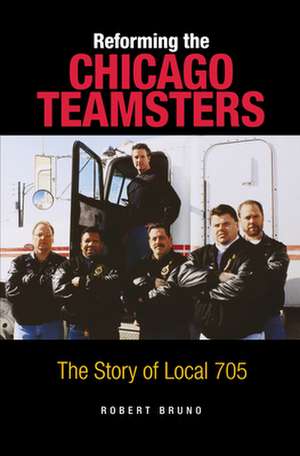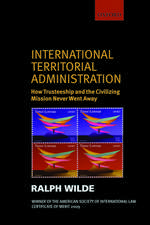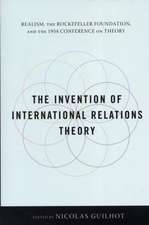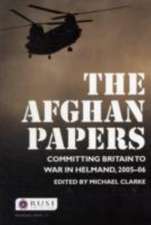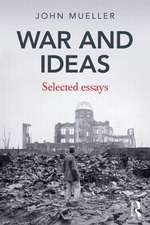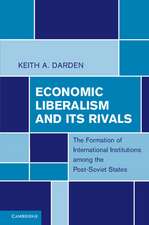Reforming the Chicago Teamsters: The Story of Local 705
Autor Robert Brunoen Paperback – 2 iun 2003
How did the Chicago Teamsters Local 705, once notorious for corruption and despotism, become an organization that the Wall Street Journal hailed as "a model of reform"? In this compelling narrative, Bruno tells of the often violent, always contentious struggle to reform one of the nation's most powerful and independent union locals.
During the worst years, Chicago Teamsters operated under thinly veiled threats and settled differences by fistfights. Workers who questioned the powerful leadership faced physical intimidation, verbal abuse, and trumped-up charges that threatened their jobs. With the expulsion of key leaders in the early 1990s, however, a decade-long struggle for control of the union began as Local 705 cast off the old days of coercion and payoffs. Reformers encouraged rank-and-file Teamsters to choose their own leaders, and after two successive open elections, an unprecedented number of Teamsters turned out to vote in a dramatic 2000 election featuring five political slates and a diverse range of issues.
Clear and captivating, Reforming the Chicago Teamsters raises important national issues about the balance of power between large corporations and working-class Americans, the role of workplace democracy in civil society, and the ways unions can both hinder and promote worker interests.
During the worst years, Chicago Teamsters operated under thinly veiled threats and settled differences by fistfights. Workers who questioned the powerful leadership faced physical intimidation, verbal abuse, and trumped-up charges that threatened their jobs. With the expulsion of key leaders in the early 1990s, however, a decade-long struggle for control of the union began as Local 705 cast off the old days of coercion and payoffs. Reformers encouraged rank-and-file Teamsters to choose their own leaders, and after two successive open elections, an unprecedented number of Teamsters turned out to vote in a dramatic 2000 election featuring five political slates and a diverse range of issues.
Clear and captivating, Reforming the Chicago Teamsters raises important national issues about the balance of power between large corporations and working-class Americans, the role of workplace democracy in civil society, and the ways unions can both hinder and promote worker interests.
Preț: 141.80 lei
Nou
Puncte Express: 213
Preț estimativ în valută:
27.14€ • 29.49$ • 22.81£
27.14€ • 29.49$ • 22.81£
Carte disponibilă
Livrare economică 31 martie-14 aprilie
Preluare comenzi: 021 569.72.76
Specificații
ISBN-13: 9780875805962
ISBN-10: 0875805965
Pagini: 213
Dimensiuni: 152 x 229 x 15 mm
Greutate: 0.35 kg
Ediția:1
Editura: Northern Illinois University Press
Colecția Northern Illinois University Press
ISBN-10: 0875805965
Pagini: 213
Dimensiuni: 152 x 229 x 15 mm
Greutate: 0.35 kg
Ediția:1
Editura: Northern Illinois University Press
Colecția Northern Illinois University Press
Recenzii
"An important, engrossing, and well-written book.... Bruno's colorful commentary brings to life the high drama of the Teamsters' transformation."—Paul F. Clark, Pennsylvania State University
"A unique and interesting study. No one else has reported such a fascinating case of day-by-day internal union politics."—George Strauss, University of California, Berkeley
"A unique and interesting study. No one else has reported such a fascinating case of day-by-day internal union politics."—George Strauss, University of California, Berkeley
Notă biografică
Robert Bruno is Associate Professor of Labor and Industrial Relations at the University of Illinois and author of Steelworker Alley: How Class Works in Youngstown.
Cuprins
Table of Contents
Introduction
Part One—The Corruption and Redemption of Local 705
1. Teamsters' Power and Politics
2. Fighting Corruption
3. Democratic Governance
4. Democracy Brings Results
Part Two—Union Democracy, Elections, and the Politics of Local 705
5. The Reformers Split
6. The Nomination of Political Parties
7. The Campaign Begins
8. Campaign Platforms and Rank-and-File Votes
9. Campaign Issues
10. The 705 Vote
Epilogue
Notes
Bibliography
Index
Part One—The Corruption and Redemption of Local 705
1. Teamsters' Power and Politics
2. Fighting Corruption
3. Democratic Governance
4. Democracy Brings Results
Part Two—Union Democracy, Elections, and the Politics of Local 705
5. The Reformers Split
6. The Nomination of Political Parties
7. The Campaign Begins
8. Campaign Platforms and Rank-and-File Votes
9. Campaign Issues
10. The 705 Vote
Epilogue
Notes
Bibliography
Index
Descriere
How did the Chicago Teamsters Local 705, once notorious for corruption and despotism, become an organization that the Wall Street Journal hailed as "a model of reform"? In this compelling narrative, Bruno tells of the often violent, always contentious struggle to reform one of the nation's most powerful and independent union locals.
During the worst years, Chicago Teamsters operated under thinly veiled threats and settled differences by fistfights. Workers who questioned the powerful leadership faced physical intimidation, verbal abuse, and trumped-up charges that threatened their jobs. With the expulsion of key leaders in the early 1990s, however, a decade-long struggle for control of the union began as Local 705 cast off the old days of coercion and payoffs. Reformers encouraged rank-and-file Teamsters to choose their own leaders, and after two successive open elections, an unprecedented number of Teamsters turned out to vote in a dramatic 2000 election featuring five political slates and a diverse range of issues.
Clear and captivating, Reforming the Chicago Teamsters raises important national issues about the balance of power between large corporations and working-class Americans, the role of workplace democracy in civil society, and the ways unions can both hinder and promote worker interests.
During the worst years, Chicago Teamsters operated under thinly veiled threats and settled differences by fistfights. Workers who questioned the powerful leadership faced physical intimidation, verbal abuse, and trumped-up charges that threatened their jobs. With the expulsion of key leaders in the early 1990s, however, a decade-long struggle for control of the union began as Local 705 cast off the old days of coercion and payoffs. Reformers encouraged rank-and-file Teamsters to choose their own leaders, and after two successive open elections, an unprecedented number of Teamsters turned out to vote in a dramatic 2000 election featuring five political slates and a diverse range of issues.
Clear and captivating, Reforming the Chicago Teamsters raises important national issues about the balance of power between large corporations and working-class Americans, the role of workplace democracy in civil society, and the ways unions can both hinder and promote worker interests.
